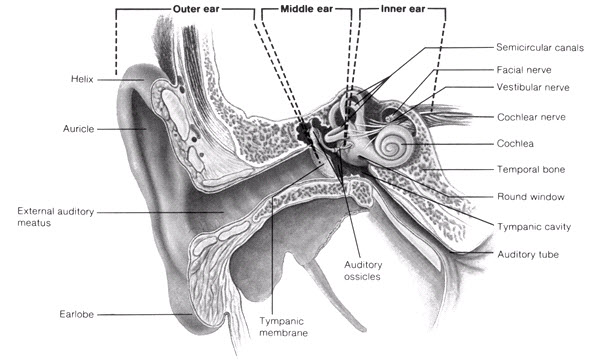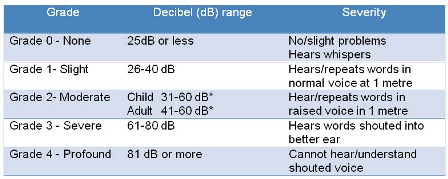Hearing impairment is a common chronic condition affecting millions of people globally. According to the World Health Organization (WHO), hearing impairment is the most common disability in newborn children worldwide. In Australia, hearing loss is very common with approximately 13% of the population are affected by partial or total hearing loss. In 2003, adult-onset hearing loss was ranked as the eighth leading specific cause of burden of disease and injury, comprising 2.5% of the total disability-adjusted life-years.
Facts about Hearing Impairment
Hearing impairment occurs when there is a reduction or loss in the ability to perceive sound resulting from an abnormality at any point of the auditory pathway (Figure 1).
Figure 1. Hearing mechanism and sites of hearing impairment

Hearing impairment:
· May be defined as mild, moderate, severe or profound
· May be unilateral (hearing impairment in one ear) or bilateral (hearing impairment in both ears)
· Can be categorised as either congenital or acquired:
o congenital hearing impairment - is present at birth or a consequence of progressive loss
o acquired hearing impairment - occurs later in life
· can have profound effects on individuals, such as:
o delay of communication development such as speech recognition and production
o slow educational progress
o cause difficulty in attaining, performing and keeping a job
o cause social and emotional problems.
Table 1. Severity of hearing impairment

*The grades/severity of hearing loss is also categorised differently for different age groups.